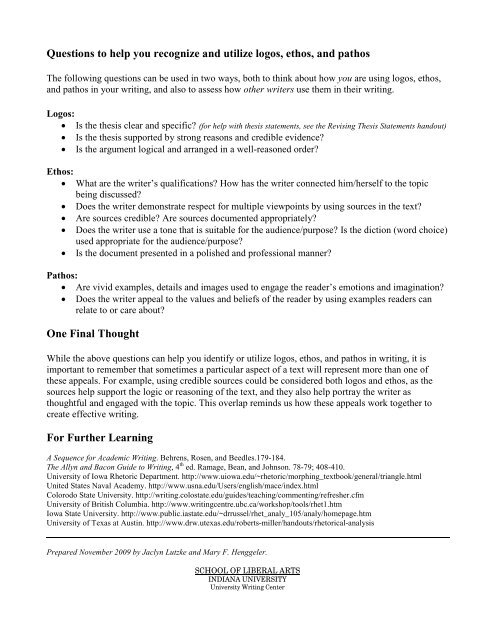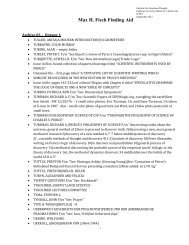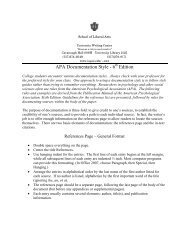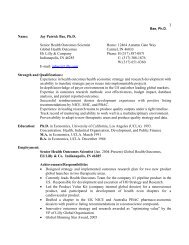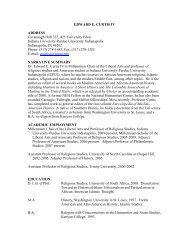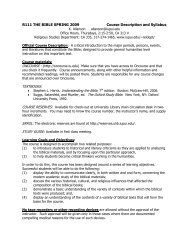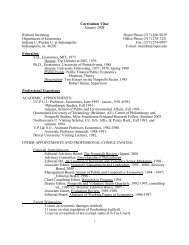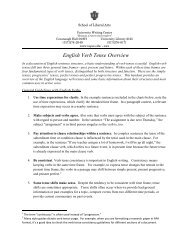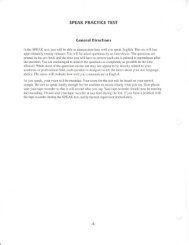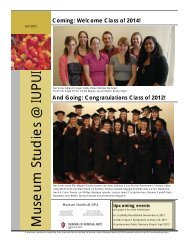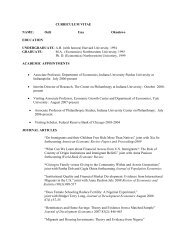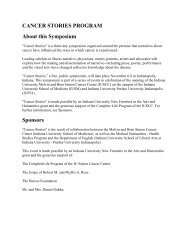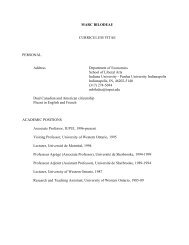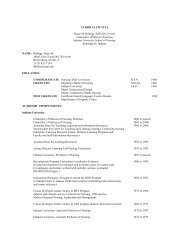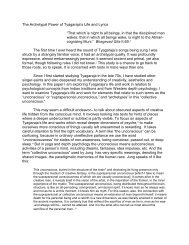Rhetoric: Logos, Ethos, Pathos - IU School of Liberal Arts - IUPUI
Rhetoric: Logos, Ethos, Pathos - IU School of Liberal Arts - IUPUI
Rhetoric: Logos, Ethos, Pathos - IU School of Liberal Arts - IUPUI
Create successful ePaper yourself
Turn your PDF publications into a flip-book with our unique Google optimized e-Paper software.
Questions to help you recognize and utilize logos, ethos, and pathos<br />
The following questions can be used in two ways, both to think about how you are using logos, ethos,<br />
and pathos in your writing, and also to assess how other writers use them in their writing.<br />
<strong>Logos</strong>:<br />
• Is the thesis clear and specific? (for help with thesis statements, see the Revising Thesis Statements handout)<br />
• Is the thesis supported by strong reasons and credible evidence?<br />
• Is the argument logical and arranged in a well-reasoned order?<br />
<strong>Ethos</strong>:<br />
• What are the writer’s qualifications? How has the writer connected him/herself to the topic<br />
being discussed?<br />
• Does the writer demonstrate respect for multiple viewpoints by using sources in the text?<br />
• Are sources credible? Are sources documented appropriately?<br />
• Does the writer use a tone that is suitable for the audience/purpose? Is the diction (word choice)<br />
used appropriate for the audience/purpose?<br />
• Is the document presented in a polished and pr<strong>of</strong>essional manner?<br />
<strong>Pathos</strong>:<br />
• Are vivid examples, details and images used to engage the reader’s emotions and imagination?<br />
• Does the writer appeal to the values and beliefs <strong>of</strong> the reader by using examples readers can<br />
relate to or care about?<br />
One Final Thought<br />
While the above questions can help you identify or utilize logos, ethos, and pathos in writing, it is<br />
important to remember that sometimes a particular aspect <strong>of</strong> a text will represent more than one <strong>of</strong><br />
these appeals. For example, using credible sources could be considered both logos and ethos, as the<br />
sources help support the logic or reasoning <strong>of</strong> the text, and they also help portray the writer as<br />
thoughtful and engaged with the topic. This overlap reminds us how these appeals work together to<br />
create effective writing.<br />
For Further Learning<br />
A Sequence for Academic Writing. Behrens, Rosen, and Beedles.179-184.<br />
The Allyn and Bacon Guide to Writing, 4 th ed. Ramage, Bean, and Johnson. 78-79; 408-410.<br />
University <strong>of</strong> Iowa <strong>Rhetoric</strong> Department. http://www.uiowa.edu/~rhetoric/morphing_textbook/general/triangle.html<br />
United States Naval Academy. http://www.usna.edu/Users/english/mace/index.html<br />
Colorodo State University. http://writing.colostate.edu/guides/teaching/commenting/refresher.cfm<br />
University <strong>of</strong> British Columbia. http://www.writingcentre.ubc.ca/workshop/tools/rhet1.htm<br />
Iowa State University. http://www.public.iastate.edu/~drrussel/rhet_analy_105/analy/homepage.htm<br />
University <strong>of</strong> Texas at Austin. http://www.drw.utexas.edu/roberts-miller/handouts/rhetorical-analysis<br />
Prepared November 2009 by Jaclyn Lutzke and Mary F. Henggeler.<br />
SCHOOL OF LIBERAL ARTS<br />
INDIANA UNIVERSITY<br />
University Writing Center


